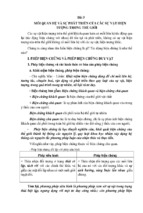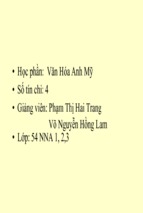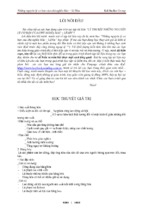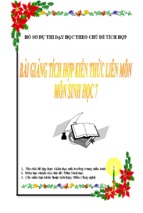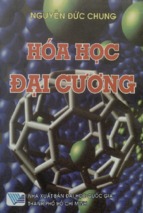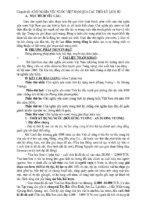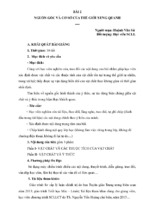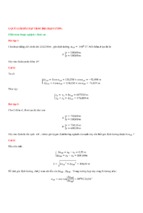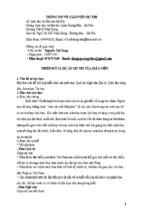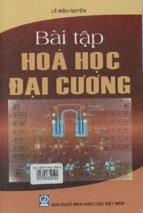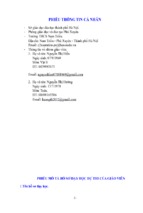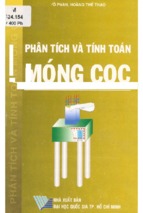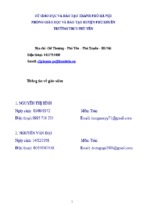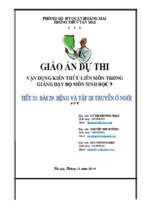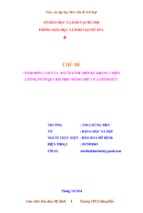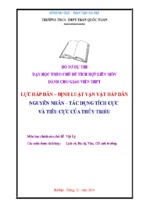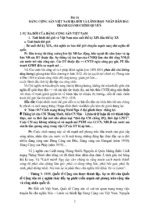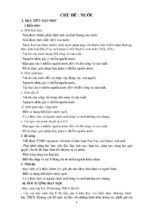Phan Cong Vinh
Le Tuan Anh
Nguyen Thi Thuy Loan
Waralak Vongdoiwang Siricharoen (Eds.)
193
Context-Aware Systems
and Applications
5th International Conference, ICCASA 2016
Thu Dau Mot, Vietnam, November 24–25, 2016
Proceedings
123
Lecture Notes of the Institute
for Computer Sciences, Social Informatics
and Telecommunications Engineering
Editorial Board
Ozgur Akan
Middle East Technical University, Ankara, Turkey
Paolo Bellavista
University of Bologna, Bologna, Italy
Jiannong Cao
Hong Kong Polytechnic University, Hong Kong, Hong Kong
Geoffrey Coulson
Lancaster University, Lancaster, UK
Falko Dressler
University of Erlangen, Erlangen, Germany
Domenico Ferrari
Università Cattolica Piacenza, Piacenza, Italy
Mario Gerla
UCLA, Los Angeles, USA
Hisashi Kobayashi
Princeton University, Princeton, USA
Sergio Palazzo
University of Catania, Catania, Italy
Sartaj Sahni
University of Florida, Florida, USA
Xuemin Sherman Shen
University of Waterloo, Waterloo, Canada
Mircea Stan
University of Virginia, Charlottesville, USA
Jia Xiaohua
City University of Hong Kong, Kowloon, Hong Kong
Albert Y. Zomaya
University of Sydney, Sydney, Australia
193
More information about this series at http://www.springer.com/series/8197
Phan Cong Vinh Le Tuan Anh
Nguyen Thi Thuy Loan
Waralak Vongdoiwang Siricharoen (Eds.)
•
Context-Aware Systems
and Applications
5th International Conference, ICCASA 2016
Thu Dau Mot, Vietnam, November 24–25, 2016
Proceedings
123
Editors
Phan Cong Vinh
Nguyen Tat Thanh University
Ho Chi Minh City
Vietnam
Le Tuan Anh
Thu Dau Mot University
Thu Dau Mot City
Vietnam
Nguyen Thi Thuy Loan
Nguyen Tat Thanh University
Ho Chi Minh City
Vietnam
Waralak Vongdoiwang Siricharoen
University of the Thai Chamber
of Commerce
Bangkok
Thailand
ISSN 1867-8211
ISSN 1867-822X (electronic)
Lecture Notes of the Institute for Computer Sciences, Social Informatics
and Telecommunications Engineering
ISBN 978-3-319-56356-5
ISBN 978-3-319-56357-2 (eBook)
DOI 10.1007/978-3-319-56357-2
Library of Congress Control Number: 2017936359
© ICST Institute for Computer Sciences, Social Informatics and Telecommunications Engineering 2017
This work is subject to copyright. All rights are reserved by the Publisher, whether the whole or part of the
material is concerned, specifically the rights of translation, reprinting, reuse of illustrations, recitation,
broadcasting, reproduction on microfilms or in any other physical way, and transmission or information
storage and retrieval, electronic adaptation, computer software, or by similar or dissimilar methodology now
known or hereafter developed.
The use of general descriptive names, registered names, trademarks, service marks, etc. in this publication
does not imply, even in the absence of a specific statement, that such names are exempt from the relevant
protective laws and regulations and therefore free for general use.
The publisher, the authors and the editors are safe to assume that the advice and information in this book are
believed to be true and accurate at the date of publication. Neither the publisher nor the authors or the editors
give a warranty, express or implied, with respect to the material contained herein or for any errors or
omissions that may have been made. The publisher remains neutral with regard to jurisdictional claims in
published maps and institutional affiliations.
Printed on acid-free paper
This Springer imprint is published by Springer Nature
The registered company is Springer International Publishing AG
The registered company address is: Gewerbestrasse 11, 6330 Cham, Switzerland
Preface
ICCASA 2016, an international scientific conference for research in the field of
context-aware computing and communication, was held during November 24–25,
2016, in Thu Dau Mot City, Vietnam. The aim of the conference is to provide an
internationally respected forum for scientific research on the technologies and applications of context-aware computing and communication. This conference offered an
excellent opportunity for researchers to discuss modern approaches and techniques for
context-aware systems and their applications. The proceedings of ICCASA 2016 are
published by Springer in the Lecture Notes of the Institute for Computer Sciences,
Social Informatics and Telecommunications Engineering series (LNICST; indexed by
DBLP, EI, Google Scholar, Scopus, Thomson ISI).
For this fifth edition, repeating the success of previous years, the Program Committee received submissions from ten countries and each paper was reviewed by at least
three experts. We chose 20 papers after intensive discussions held among the Program
Committee members. We appreciate the excellent reviews and lively discussions of the
Program Committee members and external reviewers in the review process. This year
we chose two prominent invited speakers: Dr. Sang Keon Lee from the National
Infrastructure Research Division at Korea Research Institute for Human Settlements
(KRIHS) in South Korea, and Dr. Waralak Vongdoiwang Siricharoen from the School
of Science and Technology at the University of the Thai Chamber of Commerce
(UTCC) in Thailand.
ICCASA 2016 was jointly organized by The European Alliance for Innovation
(EAI), Thu Dau Mot University (TDMU), and Nguyen Tat Thanh University (NTTU).
This conference could not have been possible without the strong support of the staff
members of these three organizations. We would especially like to thank Prof. Imrich
Chlamtac (University of Trento and Create-NET), Anna Horvathova (EAI), and Ivana
Allen (EAI) for their great help in organizing the conference. We also appreciate the
gentle guidance and help from Prof. Nguyen Manh Hung, Chairman and Rector of
NTTU, and Prof. Nguyen Van Hiep, Rector of TDMU.
November 2016
Phan Cong Vinh
Le Tuan Anh
Nguyen Thi Thuy Loan
Waralak Vongdoiwang Siricharoen
Organization
Steering Committee
Imrich Chlamtac
Phan Cong Vinh
Thanos Vasilakos
CREATE-NET, Italy (Chair)
Nguyen Tat Thanh University, Vietnam
Kuwait University
Honorary General Chairs
Nguyen Van Hiep
Nguyen Manh Hung
Thu Dau Mot University, Vietnam
Nguyen Tat Thanh University, Vietnam
General Chair
Phan Cong Vinh
Nguyen Tat Thanh University, Vietnam
Technical Program Chairs
Le Tuan Anh
Loan T.T. Nguyen
Thu Dau Mot University, Vietnam
Nguyen Tat Thanh University, Vietnam
Technical Program Session or Track Chairs
Nguyen Dang Binh
Tran Vinh Phuoc
Hue University of Science, Vietnam
Thu Dau Mot University, Vietnam
Workshops Chair
Emil Vassev
University of Limerick, Ireland
Publications Chairs
Phan Cong Vinh
Hoang Manh Ha
Nguyen Tat Thanh University, Vietnam
Thu Dau Mot University, Vietnam
Marketing and Publicity Chair
Do Nguyen Anh Thu
Nguyen Tat Thanh University, Vietnam
VIII
Organization
Patron Sponsorship and Exhibits Chairs
Nguyen Thanh Tung
Nguyen Thi Anh Tuyet
Hanoi Vietnam National University, Vietnam
Thu Dau Mot University, Vietnam
Panels and Keynotes Chair
Vangalur Alagar
Concordia University, Canada
Demos and Tutorials Chair
Nguyen Thanh Binh
Ho Chi Minh City University of Technology, Vietnam
Posters Chair
Thai Thi Thanh Thao
Nguyen Tat Thanh University, Vietnam
Industry Forum Chair
Phan Ngoc Hoang
Ba Ria-Vung Tau University, Vietnam
Special Sessions Chair
Phan Cong Vinh
Nguyen Tat Thanh University, Vietnam
Local Arrangements Chairs
Lai Xuan Thanh
Hoang Trong Quyen
Tran Van Trung
Binh Duong ICT, Vietnam
Thu Dau Mot University, Vietnam
Thu Dau Mot University, Vietnam
Website Chair
Tran Thi Nhu Thuy
Nguyen Tat Thanh University, Vietnam
Conference Coordinator
Anna Horvathova
EAI (European Alliance for Innovation)
Technical Program Committee
Abdur Rakib
Amol Patwardhan
Aniruddha Bhattacharjya
Areerat Songsakulwattana
Asad Masood Khattak
The University of Nottingham, UK
Louisiana State University, USA
Narasaraopeta Engineering College, India
Rangsit University, Thailand
Kyung Hee University, South Korea
Organization
Ashad Kabir
Ashish Khare
Athar Sethi
Charu Gandhi
Chien-Chih Yu
Chintan Bhatt
David Sundaram
Dinh Duc Anh Vu
Duong Tuan Anh
Dzati Athiar Ramli
François Siewe
Gabrielle Peko
Giacomo Cabri
Govardhan Aliseri
Hoang Quang
Hoang Huu Hanh
Huynh Quyet-Thang
Huynh Trung Hieu
Huynh Xuan Hiep
Ichiro Satoh
Issam Damaj
Jamus Collier
Krishna Asawa
Kurt Geihs
Le Manh
Loan T.T. Nguyen
Ly Quoc Ngoc
Manmeet Mahinderjit
Singh
Moeiz Miraoui
Mubarak Mohammad
Muhammad Fahad Khan
Naseem Ibrahim
Ngo Tan Vu Khanh
Nguyen Quoc Huy
Nguyen Dang Binh
Nguyen Hong Phu
Nguyen Hung Cuong
Nguyen Kim Quoc
Nguyen Loc
Nguyen Thanh Binh
Nguyen Thanh Phuong
Nguyen Tuan Dang
Ognjen Rudovic
IX
Swinburne University of Technology, Australia
University of Allahabad, India
Universiti Teknologi PETRONAS, Malaysia
Jaypee Institute of Information Technology, India
National ChengChi University, Taiwan
Charotar University of Science and Technology, India
The University of Auckland, New Zealand
University of Information Technology, Vietnam
Ho Chi Minh City University of Technology, Vietnam
Universiti Sains Malaysia, Malaysia
De Montfort University, UK
The University of Auckland, New Zealand
University of Modena and Reggio Emilia, Italy
Jawaharlal Nehru Technological University Hyderabad,
India
Hue University of Sciences, Vietnam
Hue University, Vietnam
Hanoi University of Science and Technology, Vietnam
Ho Chi Minh City University of Industry, Vietnam
Can Tho University, Vietnam
National Institute of Informatics, Japan
The American University of Kuwait, Kuwait
University of Bremen, Germany
Jaypee Institute of Information Technology, India
University of Kassel, Germany
Van Hien University, Vietnam
Nguyen Tat Thanh University, Vietnam
Ho Chi Minh City University of Science, Vietnam
Universiti Sains Malaysia, Malaysia
University of Quebec, Canada
Concordia University, Canada
Federal Urdu University of Arts, Science and
Technology, Pakistan
Albany State University, USA
Oracle Co., Vietnam
Saigon University, Vietnam
Hue University of Sciences, Vietnam
University of Luxembourg, Luxembourg
Hanoi University of Science and Technology, Vietnam
Nguyen Tat Thanh University, Vietnam
Sunflower Soft Co., Vietnam
Ho Chi Minh City University of Technology, Vietnam
Polytechnic University of Bari, Italy
University of Information Technology, Vietnam
Imperial College London, UK
X
Organization
Ondrej Krejcar
Prasanalakshmi Balaji
Pham The Bao
Phan Ngoc Hoang
Qin Li
S. Satyanarayana
Shanmugam BalaMurugan
Santi Phithakkitnukoon
Tran Dinh Que
Vangalur Alagar
Vo Thanh Tu
Waralak V. Siricharoen
Yaser Jararweh
Zhu Huibiao
University of Hradec Kralove, Czech Republic
Professional Group of Institutions, India
Ho Chi Minh City University of Science, Vietnam
Ba Ria-Vung Tau University, Vietnam
East China Normal University, China
KL University, India
Kalaignar Karunanidhi Institute of Technology, India
Chiang Mai University, Thailand
Posts and Telecommunications Institute of Technology,
Vietnam
Concordia University, Canada
Hue University of Sciences, Vietnam
UTCC, Thailand
Jordan University of Science and Technology, Jordan
East China Normal University, China
Contents
Modelling and Reasoning About Context-Aware Agents over
Heterogeneous Knowledge Sources . . . . . . . . . . . . . . . . . . . . . . . . . . . . . .
Hafiz Mahfooz Ul Haque, Abdur Rakib, and Ijaz Uddin
Context-Based Project Management. . . . . . . . . . . . . . . . . . . . . . . . . . . . . .
Ammar Alsaig, Alaa Alsaig, and Mubarak Mohammad
Organisational Knowledge Sharing Using Social Networking Sites:
Risks, Benefits and Barriers . . . . . . . . . . . . . . . . . . . . . . . . . . . . . . . . . . .
Valeria Sadovykh and David Sundaram
Context-Adaptive Business Networks . . . . . . . . . . . . . . . . . . . . . . . . . . . .
Jing Jing He, Elke Wolf, and David Sundaram
1
12
22
32
Context-Aware Hand Pose Classifying Algorithm Based on Combination
of Viola-Jones Method, Wavelet Transform, PCA and Neural Networks . . . .
Ngoc Hoang Phan and Thi Thu Trang Bui
42
A Load Balancing Game Approach for VM Provision Cloud Computing
Based on Ant Colony Optimization . . . . . . . . . . . . . . . . . . . . . . . . . . . . . .
Khiet Thanh Bui, Tran Vu Pham, and Hung Cong Tran
52
Optimizing the Algorithm Localization Mobile Robot
Using Triangulation Map . . . . . . . . . . . . . . . . . . . . . . . . . . . . . . . . . . . . .
Dao Duy Nam and Nguyen Quoc Huy
64
Enhanced Human Activity Recognition on Smartphone by Using Linear
Discrimination Analysis Recursive Feature Elimination Algorithm. . . . . . . . .
Loc Tan Nguyen
72
LCD-Based on Probability in Content Centric Networking . . . . . . . . . . . . . .
Dang Tran Phuong, Tuan-Anh Le, Le Phong Du,
Tuyet Anh Thi Nguyen, and Phuong Luu Vo
82
Multivariate Cube for Representing Multivariable Data in Visual Analytics . . . .
Hong Thi Nguyen, Anh Van Thi Tran, Tuyet Anh Thi Nguyen,
Luc Tan Vo, and Phuoc Vinh Tran
91
An Approach to Analyzing Execution Preservation in Java
Program Refactoring . . . . . . . . . . . . . . . . . . . . . . . . . . . . . . . . . . . . . . . .
Thi-Huong Dao, Hong Anh Le, and Ninh Thuan Truong
101
XII
Contents
A New Method to Analyze Graphical User Interfaces of Android
Applications . . . . . . . . . . . . . . . . . . . . . . . . . . . . . . . . . . . . . . . . . . . . . .
Hong Anh Le and Ninh Thuan Truong
111
An Efficient Method for Time Series Join on Subsequence Correlation
Using Longest Common Substring Algorithm . . . . . . . . . . . . . . . . . . . . . . .
Vo Duc Vinh, Nguyen Phuc Chau, and Duong Tuan Anh
121
An ORM Based Context Model for Context-Aware Computing . . . . . . . . . .
Annet Nishantha Anton Yogarajah, Shiluka Raveen Dharmasena,
Gobinath Loganathan, Srinath Perera,
Vishnuvathsasarma Balachandrasarma,
and Malaka Walpola
132
A Conceptual Framework for IS Project Success. . . . . . . . . . . . . . . . . . . . .
Thanh D. Nguyen, Tuan M. Nguyen, and Thi H. Cao
142
Notes on Recognizing Echinocyte by the Top-Hat Transform . . . . . . . . . . . .
Hoang Manh Ha
155
Personalized Email User Action Prediction Based on SpamAssassin . . . . . . .
Ha-Nguyen Thanh, Quan-Dang Dinh, and Quang Anh-Tran
161
Deadlock Avoidance for Resource Allocation Model V VM-out-of-N PM . . .
Ha Huy Cuong Nguyen, Hoang Dung Tran, Van Thang Doan,
and Vu Thi Phuong Anh
172
Enhance Performance of Action Evaluation Functions
with Stochastic Optimization Algorithms . . . . . . . . . . . . . . . . . . . . . . . . . .
Nguyen Quoc Huy, Dao Duy Nam, and Dang Cong Quoc
183
A Method for Mobility Management in Cellular Networks
Using Data Mining . . . . . . . . . . . . . . . . . . . . . . . . . . . . . . . . . . . . . . . . .
Giang Minh Duc, Le Manh, and Do Hong Tuan
193
Author Index . . . . . . . . . . . . . . . . . . . . . . . . . . . . . . . . . . . . . . . . . . . .
205
Modelling and Reasoning About Context-Aware
Agents over Heterogeneous Knowledge Sources
Hafiz Mahfooz Ul Haque, Abdur Rakib(B) , and Ijaz Uddin
School of Computer Science, The University of Nottingham,
Malaysia Campus, Semenyih, Malaysia
{khyx2hma,Abdur.Rakib,khyx4iui}@nottingham.edu.my
Abstract. This paper presents a conceptual framework and multi-agent
model for context-aware decision support in dynamic smart environments
based on heterogeneous knowledge sources. The framework relies on distributed ontologies and allows us to model context-aware agents which
reason using rules that are derived from ontologies using the notion of
multi-context systems. The use of the proposed framework is illustrated
using a simple system developed from ontologies considering three different smart environment domains.
Keywords: Context-aware agents
reasoning · Ontology
1
·
Multi-context system
·
Defeasible
Introduction
There is no doubt that with an increasing number of smart devices such as
smartphones in use, the vast amounts of contextual data being generated has
great influence on context-aware mobile computing research. Smartphones have
a variety of embedded sensors that can be used to automate data collection and
provide a platform to infer rich contextual data about users, including location,
time, and environmental condition, among others. This is known as customized
information according to the specific context. To be more precise, these sensors
can be used to gather the contextual information of a user or to manipulate
the context. Different notions of context have been studied across various fields
of computer science and various physical and conceptual environmental aspects
can be included in the notion of context [11]. Among others, Dey et al. [6] define
a context-aware system as a system which uses context to provide relevant information and/or services to its user based on the user’s tasks. The formal context
modelling and reasoning about context is one of the fundamental research areas
in context-aware computing. In the literature, various context modelling and reasoning approaches have been proposed, including ontology and rule-based approach [8,13,14]. In our previous work [13,14], we have developed formal logical
frameworks and shown how context-aware systems can be modelled as multiagent reasoning agents. A formal logical model allows us to capture a system’s
c ICST Institute for Computer Sciences, Social Informatics and Telecommunications Engineering 2017
�
P. Cong Vinh et al. (Eds.): ICCASA 2016, LNICST 193, pp. 1–11, 2017.
DOI: 10.1007/978-3-319-56357-2 1
2
H. Mahfooz Ul Haque et al.
behaviour in a systematic and precise way. This is because a formal logic has simple unambiguous syntax and semantics, which also allows automated reasoning.
Our approach to context modelling was based on a domain specific centralised
ontology, which allows a formal representation of domain knowledge and advancing contextual knowledge sharing among the agents. However, in a real contextaware deployment setting, we can envisage a coalition of heterogeneous domains
which need to mutually share/exchange context knowledge. This needs different
modelling approach to deal with distributed context handling considering more
than one domain. In this connection, the notion of multi-context systems has
been used for interlinking different knowledge sources in order to enhance the
expressive capabilities of heterogeneous systems. A multi-context system (MCS)
includes a set of contexts and a set of inference rules that allows information
to flow among different contexts [7]. In MCS, each context is defined as a selfcontained knowledge source which includes the set of axioms and inference rules
to model the system and perform local reasoning. Literature highlighted many
definitions of multi-context systems (see e.g., [1,5]). In [5], Brewka et al. define
multi-context system as a number of people, agents, databases etc. to describe
the available information from a set of contexts and inference rules and specify the information flow among these contexts. In [1], Benslimane et al. have
described ontology as a context, which is itself an independent self-contained
knowledge source having a set of axioms and inference rules with its own reasoner
to perform reasoning. In this work, we consider the concept of context in two
levels. The first level is based on multi-context system to model heterogeneous
systems similar to contextual ontologies studied by [1]. For the second level, we
follow the approach proposed in our previous work [13,14], where a context is
formally defined as a (subject, predicate, object) triple that states a fact about
the subject where — the subject is an entity in the environment, the object is a
value or another entity, and the predicate is a relationship between the subject
and object. In this paper, we extend our previous work [13] by introducing a
different modelling approach to deal with distributed context handling considering more than one domain. This approach is novel in a sense that context-aware
agents use contextual information which are extracted from different knowledge
sources.
The rest of the paper is organized as follows. In Sect. 2, we briefly review distributed description logics and related work. In Sect. 3, we contextualize ontologies using three domains to illustrate the central idea of our multi-context systems. In Sect. 4, we briefly describe a tool, D-Onto-HCR, which is developed
to translate the semantic knowledge into Horn-clause rules which are used to
model context-aware systems as multi-agent systems. In Sect. 5, we presents a
conceptual framework for modelling context-aware reasoning agents using the
MCS notion. In Sect. 6, we illustrate the use of the proposed framework using
an example system and conclude in Sect. 7.
Modelling and Reasoning About Context-Aware Agents
2
2.1
3
Background and Related Work
Distributed Description Logics
Recent developments in the field of semantic web have led to a renewed interest in
the distributed knowledge bases [3,9,15]. A growing body of research realizes the
significance of extending the OWL based formalisms by providing inter-ontology
mappings through distributed description logics. Distributed description logic
(DDL) is a formal logical framework which combines different description logics
(DLs) knowledge bases to express heterogeneous information. A DDL is basically
a generalization of the DL framework, which is designed to formalize multiple
ontologies interconnected by semantic mappings [15]. One of the reasons for
interconnecting ontologies is to preserve their own identity and specify their
independence [9]. DDLs have introduced the notion of multiple ontologies with
distributed reasoning where each local ontology has its own local knowledge
base. Each local ontology knowledge base consists of TBox and ABox axioms.
The correspondences of different ontology axioms is called inter-ontology axioms
or bridge rules. Bridge rules map the TBox axioms of one ontology with the TBox
axioms of other ontology in an implicit manner. In other words, distributed TBox
expresses the semantic relations among local TBoxes via bridge rules. These
bridge rules allow concepts of an ontology to subsume a concept from another
ontology, and they express the semantic mappings among different ontologies. A
bridge rule is an inter-ontology axiom having one of the following forms: Ci � Dj ;
→
−
Ci � Dj ; where Ci , Dj are concepts of ontologies Oi and Oj respectively. A
→
−
distributed DL knowledge base (DKB) is a set of different DL knowledge bases,
expressed as a pair �T, A�, which consists of distributed TBoxes and ABoxes. Let
us assume we have a collection of DLs and each DL is represented by {DLi },
where i ∈ I is an element of a non empty set of indexes used to identify ontologies.
A distributed TBox (DTBox) defines TBoxes {Ti }i∈I of all local DLs from
their corresponding domain ontologies, and bridge rules between these TBoxes
which are of the form B = {bij } (which states a set of bridge rules B from DLi
to DLj and {∀i, j(i = j) ∈ I}). So, DTBox is represented as T = �{Ti }i∈I , B�.
A distributed ABox (DABox) A = �{Ai }i∈I , C� consists of ABoxes {Ai }i∈I of
all local DLs from their corresponding domain ontologies, and a set of individuals
that may either be partial or complete are of the form C = {cij } which means
the individuals corresponds from DLi to DLj and {∀i, j(i = j) ∈ I}.
2.2
Related Work
There has been a renewed research interest in making multiple heterogeneous
ontologies interoperate. For example, the work by [15] has introduced a system
which can carry out reasoning services with multiple ontologies. The authors have
discussed the reasoning problem in multiple ontologies interrelated with semantic mappings, where the results of local reasonings performed in single ontologies
are combined via semantic mappings to reason over distributed ontologies. In [4],
4
H. Mahfooz Ul Haque et al.
a framework is presented for multi-context reasoning systems, which allows combining arbitrary monotonic and nonmonotonic logics and non-monotonic bridge
rules are used to specify the information flow among contexts. In [2], authors
have proposed a distributed algorithm for query evaluation in a Multi-Context
Systems framework based on defeasible logic. In their work, contexts are built
using defeasible rules, and the proposed algorithm can determine for a given
literal P whether P is (not) a logical conclusion of the Multi-Context Systems,
or whether it cannot be proved that P is a logical conclusion. However, our
purposed approach of reasoning is quite different in a sense that heterogeneous
knowledge sources are translated into a set of Horn-clause rules, which are used
to model context-aware non-monotonic rule-based agents.
3
Contextualizing Ontologies Using Multi-context
System
In [13], we have shown how we use OWL 2 RL ontologies and Semantic Web
Rule Language (SWRL) for context-modelling and rule-based reasoning that
enables the construction of a formal context-aware system as a distributed nonmonotonic rule-based agents. In this work, to model the systems, we extract
heterogeneous contextual information from multiple ontologies with the intention
of preserving the identity and independence of each specialized domain ontology.
To model distributed domains for an example system, we develop three ontologies
named as Smart Patient Care (OSP C ), Smart Home (OSHO ) and Smart Hospital
(OSHP ) which have their corresponding DL knowledge bases as DLSP C , DLSHO
and DLSHP respectively. We have discussed how we translate a DL ontology
(OWL 2 RL) into a set of plain text Horn-clause rules in [13]. Additionally,
we construct the bridge rules which are semantically mapped using distributed
DL Knowledge bases. Figure 1 depicts the extracts of class hierarchies of three
ontologies. Some of the bridge rules are given below:
: P atient � OSHO : AuthorizedP erson.
(1)
→
−
: N urse � OSHO : AuthorizedP erson.
(2)
→
−
: N urse � OSHP : P aramedicalStaf f.
(3)
→
−
: CallAmbulance � OSHP : AmbulatoryClinic. (4)
→
−
Bridge rules 1 and 2 show the relationship between OSP C and OSHO , and
rules 3 and 4 show the relationship between OSP C and OSHP . Rule 1 states that
a Patient from Patient Care Ontology is an Authorized Person in the Smart
Home. Rule 2 and 3 express that a Nurse from the Patient Care Ontology is
an Authorized Person in the Smart Home and at the same time a Nurse is a
Paramedical staff in the Smart Hospital. These rules can also be represented in
first order form as follows:
OSP C
OSP C
OSP C
OSP C
P atient(?p)
→ AuthorizedP erson(?p)
(1)
We model the context using ontologies (including bridge rules, OWL 2 RL
and SWRL rules) and extract a set of Horn-clause rules from different ontologies
Modelling and Reasoning About Context-Aware Agents
5
Fig. 1. Class hierarchy of smart environment ontologies
using the tool discussed in the next section. Each agent in the context-aware
system has a program, consisting of these extracted Horn clause rules.
4
D-Onto-HCR
To extract the rules from different ontologies, we developed an OWL-API based
translator, which takes ontologies as input and then translates the set of axioms
(in OWL 2 RL and SWRL form) into a set of plain text Horn-clause rules. The
design of the OWL API corresponds to the OWL 2 Structural Specification and
this dynamic design model allows developers to provide flexible implementations
for major components of the system. In OWL API, the names and hierarchies
for the axioms, class expressions and entities correspond to the OWL structural
specification. Indeed, there is a proximal one to one translation between OWL
API model interfaces and the OWL 2 Structural Specification, implying that this
becomes easier to correlate the high level OWL 2 specification with the design
of the OWL-API [10]. To extract ontology axioms and facts, we use OWL-API
to parse the ontology.
Protégé [12] ontology editor allows SWRL rules to be written in Horn-clause
rule format but practically these rules are written in functional syntax which are
in DL-Safe rule form. D-Onto-HCR translates DL-safe rules axioms into Hornclause rules format. Additionally, this translator extracts concepts from different
ontologies and maps them correspondingly in the from of bridge rules which are
6
H. Mahfooz Ul Haque et al.
Fig. 2. Distributed semantic knowledge translation process
transformed in OWL 2 RL rule format. These rules are then translated into a set
of plain text Horn-clause rules format. Figure 2 shows the distributed semantic
knowledge translation process. Each ontology has an ontology IRI (International
Resource Identifier) to identify ontology and their classes, properties and individuals. The translation process works as follows: (i) When the tool starts its
execution, it loads all listed ontologies from the published source as an input in
OWL/XML format; (ii) It uses OWL parser to parse the ontologies into OWL
API objects which then extracts the set of TBox and ABox axioms; (iii) The set
of TBox axioms are then translated into a set of plain text Horn clause rules;
(v) ABox axioms and DL safe SWRL rules are already in the Horn-clause format; (vi) The bridge rules (inter-ontology axioms) are extracted from different
ontologies and are also transformed into a set of Horn-clause rules. Multi-context
system is a powerful framework for modelling different knowledge sources. Considering the reservations of keeping their own identity and independence as an
independent system, the D-Onto-HCR tool transforms useful information from
these knowledge sources (without making any alteration in ontologies) into a
standardized format, i.e., Horn-clause rule format.
5
Multi-agent Model over Heterogeneous Knowledge
Sources
We extend the logical framework presented in [13] by incorporating the notion
of multi-context systems where rules are derived from heterogeneous semantic knowledge sources. The system consists of nAg (≥1) individual agents Ag =
{1, 2, ...., nAg }. Each agent i ∈ Ag has a program, consisting of a finite set of
Modelling and Reasoning About Context-Aware Agents
7
strict, defeasible, and bridge rules, and a working memory, which contains facts.
Each agent in the system is represented by a triple (�, F,
), where F is a
finite set of facts contained in the working memory, � = (�s , �d , �br ) is a finite
set of strict, defeasible, and bridge rules, and
is a superiority relation on
�. Strict rules (�s ) are non-contradictory whereas defeasible rules (�d ) can be
defeated based on contrary evidence. Bridge rules (�br ) are non-contradictory
rules which represent the distributed knowledge base concepts. In this framework, each context-aware agent is designed to solve a specific problem. Agents
in the system acquire contextual information from domain specific ontologies
(rules and facts of an agent can be derived from one or multiple ontologies), perform reasoning (based on the information they have in their knowledge bases),
communicate with each other, and adapt the system behaviour accordingly. An
example set of Horn-clause rules and facts are shown in Table 1. As system moves,
the matching rules will be fired based on their predefined priorities which are
set by the system designer. That is, a context-aware system composed of a set of
rule-based agents, and firing of rules that infer new facts may determine context
changes and represent overall behaviour of the system.
In this framework context-aware agents are modelled using different knowledge sources, where each of them has its own knowledge source and a reasoning
strategy. For example, Fig. 3 shows that working memories of three agents contain facts (elements of ABox) from one ontology or multiple ontologies. Agent
1’s working memory contains the contextual information C11 , C12 , C15 , and C17
which are instances of the Smart Home ontology and C22 which is an instance
of the Smart Hospital ontology. The working memory of agent 2 has contextual
information only from Smart Hospital ontology whereas the working memory
of agent N contains the instances from all the ontologies. In a similar fashion
bridge rules of an agent include concepts from multiple ontologies.
Fig. 3. MCS based context-awareness in the working memory of agent i
8
H. Mahfooz Ul Haque et al.
Table 1. Example rules for smart environment context-aware system
Agent 1: Home care
Initial facts: Person(’John), AuthorizationID(’P0001),
hasAuthorizationID(’John, ’P0001), FireFighter(’Simon)
R11: Person(?p), hasAuthorizationID(?p, ?aid), AuthorizationID(?aid) →
AuthorizedPerson(?p)
R12: FireFighter(?ff) �→ AuthorizedPerson(?ff)
R13: Tell(3,1, NotifyPerson(?p, ?loc)) → NotifyPerson(?p, ?loc)
R14: NotifyPerson(?p, ?loc), FireFighter(?ff) → isRescuedBy(?p, ?ff)
Agent 2: Smoke detector
Initial facts: Smoke(’True), hasNotifiedSmokeLocation(’True, ’Kitchen)
R21: Smoke(?s), hasNotifiedSmokeLocation(?s, ?loc) ⇒ BurglarAlarm(?loc)
R22: Smoke(?s), hasNotifiedSmokeLocation(?s, ?loc) ⇒ ∼ BurglarAlarm(?loc)
R23: BurglarAlarm(?loc) → Tell(2, 3, BurglarAlarm(?loc))
Rule Priority: R21 � R22
Agent 3: Emergency monitor
Initial facts: PersonWithinRange(’John, ’Kitchen), isFireExtinguisherInstalled
(’FEK01, ’Yes)
R31: Tell(2, 3, BurglarAlarm(?loc)) → BurglarAlarm(?loc)
R32: BurglarAlarm(?loc) → hasAlarmingSituation(?loc, ’Emergency)
R33: hasAlarmingSituation(?loc, ’Emergency), isFireExtinguisherInstalled
(?fe, ’Yes) → ActivateFireExtinguisher(?loc)
R34: hasAlarmingSituation(?loc, ’Emergency), PersonWithinRange(?p, ?loc) →
NotifyPerson(?p, ?loc)
R35: NotifyPerson(?p, ?loc) → Tell(3,1, NotifyPerson(?p, ?loc))
6
Case Study: Smart Environment Facilitator
We model a smart environment facilitator system considering three different and
independent domains, namely Smart Home, Smart Hospital, and Smart Patient
Care. The purpose is to model context-aware reasoning agents in healthcare
environments which require sharing of knowledge across the domains, including data generated by embedded sensors and wearable smart badges in that
environments, while dealing with semantic heterogeneity that exists across the
knowledge sources. The Smart Home ontology models the assisted living environment with user-friendly, comfortable and security related facilities. The Smart
Hospital ontology models medical services provided to the inpatient and outpatient care. The Smart Patient Care ontology models various devices connected
with a patient which monitor the patient’s vital information, including blood
pressure, blood sugar, and heart rate. As we have already developed ontologies
of these domains, to illustrate the use of the framework we consider a very simple
- Xem thêm -

